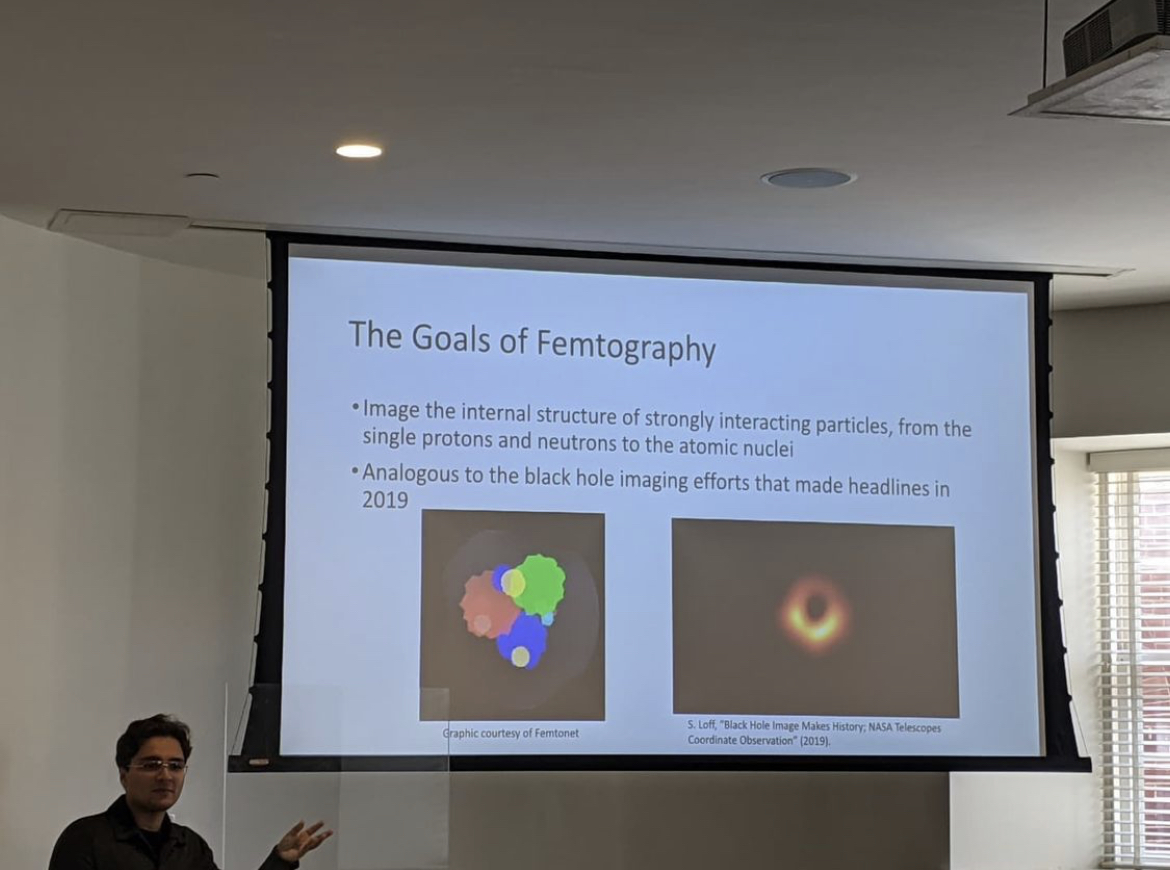Nuclear femtography
I have worked with the UVA Femtography group, Femtonet, since the summer of 2021. The aim of Femtonet, and the Center for Nuclear Femtography (CNF) which supports it, is to image the internal structure of strongly interacting particles, from the single protons and neutrons to the atomic nuclei. Generalized Parton Distributions (GPDs), which are at the core of Femtonet’s work, bring together concepts from parton distributions and hadron form factors. As part of the group, I have performed analytic calculations of the cross section for polarized deeply virtual Compton (DVCS) scattering from both the longitudinally and transversely polarized proton. I contributed also to verifying the results of a Mathematica code produced by the collaboration that automates the calculation process. In performing Fourier transforms of GPDs that represent quarks and gluons in coordinate space, I have run and edited C/C++ code based on the Fastest Fourier Transform in the West (FFTW) library and made three-dimensional visualizations of the internal structure of the nucleon through gnuplot and Python libraries.
I presented our work on Fourier transforms of GPDs at this year’s Division of Nuclear Physics (DNP) meeting in a poster presentation as part of the Conference Experience for Undergraduates, and I gave a talk at the Southeastern Section of the American Physical Society in Tallahassee, Florida. For presenting similar material at an undergraduate symposium in physics and astronomy at UVA, I won second place for my talk.
